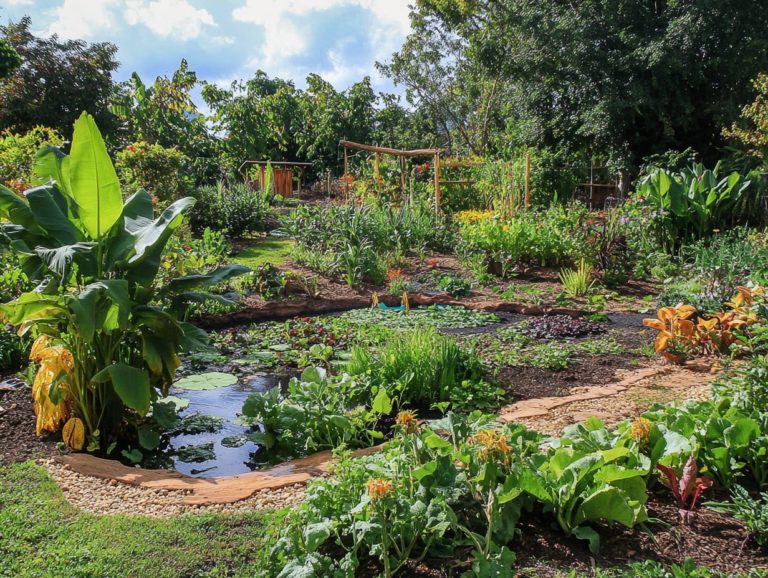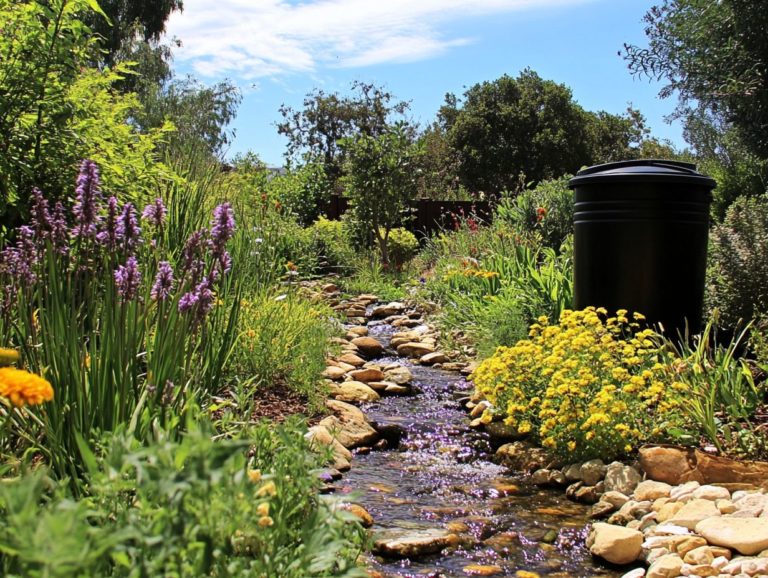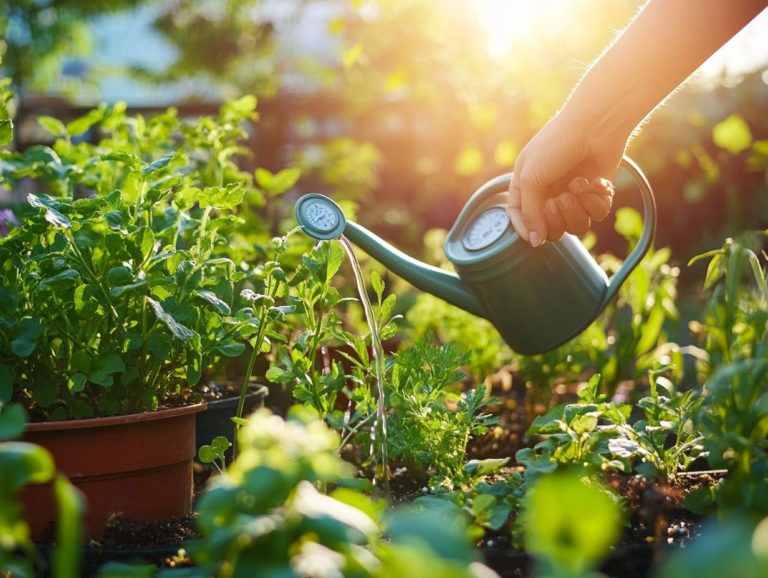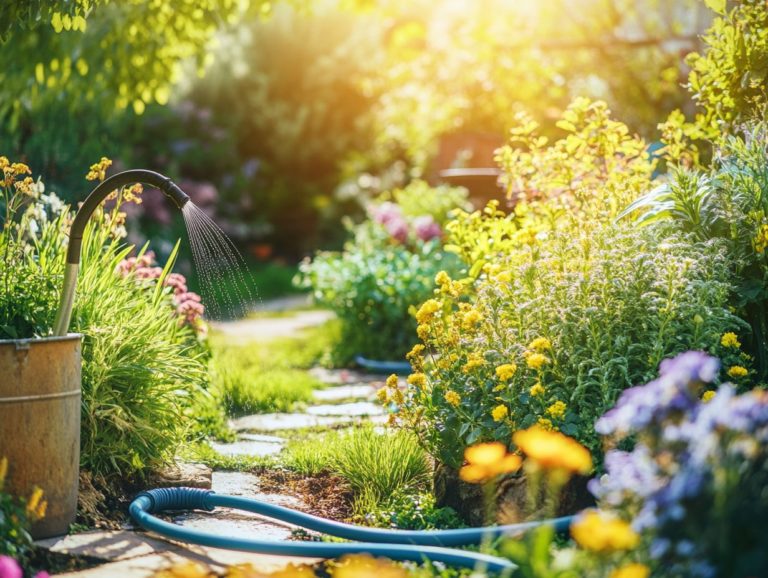How to Create a Hydroponic Water System
In a time when sustainable practices and innovative gardening techniques are becoming increasingly popular, hydroponic water systems stand out as a transformative solution for both hobbyists and dedicated growers.
This article delves into the essentials of hydroponics, showcasing its many advantages over traditional soil gardening. You’ll uncover the different types of hydroponic systems, from deep water culture to aeroponics, and discover how to construct and maintain your own setup.
Immerse yourself in the realm of soilless gardening and tap into the potential for flourishing plants!
Contents
- Key Takeaways:
- Benefits of Hydroponic Water Systems
- Types of Hydroponic Water Systems
- Building Your Own Hydroponic Water System
- Maintaining a Hydroponic Water System
- Frequently Asked Questions
- What materials do I need to create a hydroponic water system?
- Can I use any container for a hydroponic water system?
- How do I set up the pump in a hydroponic water system?
- What is the best growing medium to use in a hydroponic water system?
- How often should I change the nutrient solution in a hydroponic water system?
- What plants can I grow in a hydroponic system?
Key Takeaways:
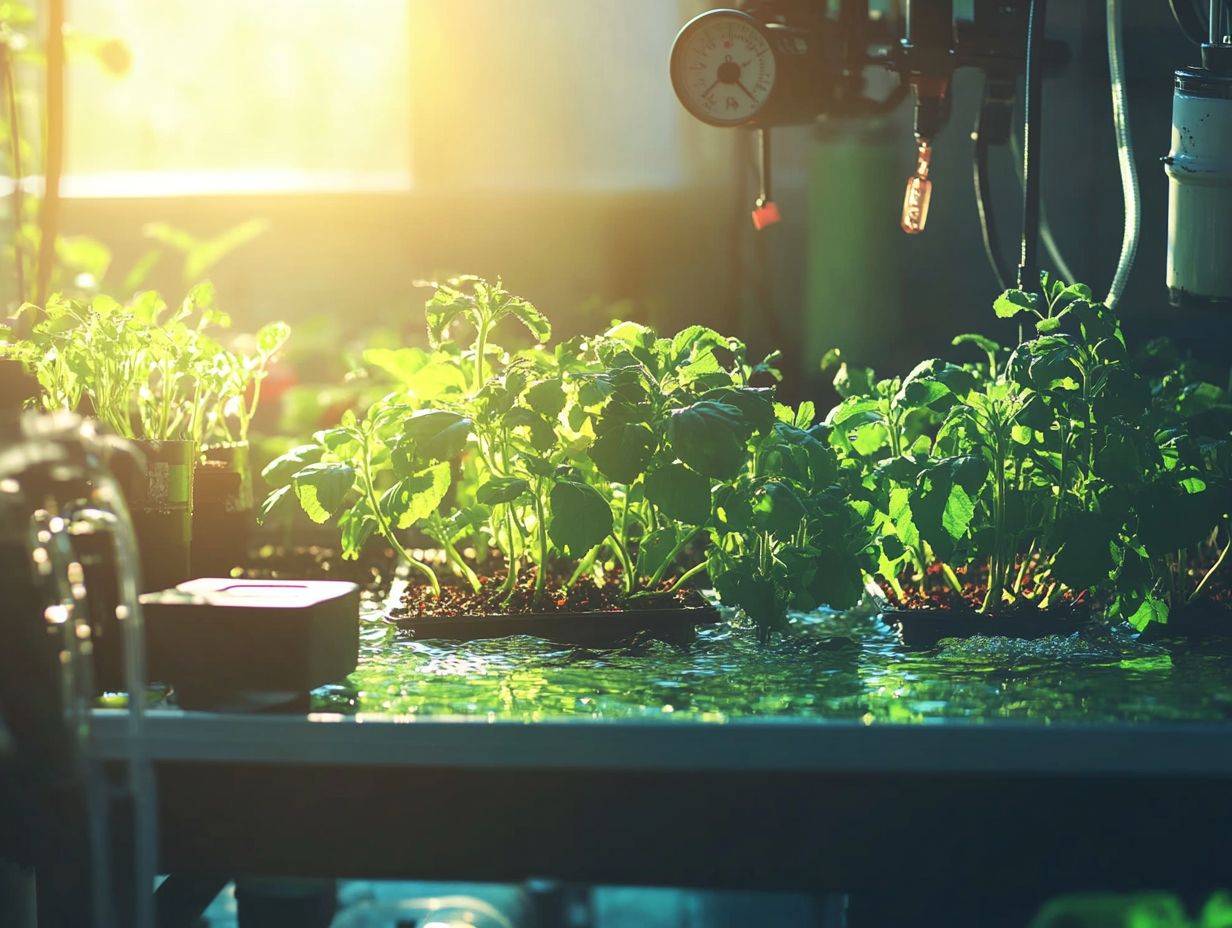
- Unlock the amazing benefits of hydroponic water systems, such as faster growth and higher yields over traditional soil gardening.
- Explore various types of hydroponic systems, including deep water culture, ebb and flow, drip systems, and aeroponics.
- To successfully build and maintain your own hydroponic system, you ll need the right materials, proper pH levels (the measure of how acidic or alkaline your water is), nutrient levels, and regular cleaning.
What is a Hydroponic Water System?
A hydroponic water system is an innovative gardening method that enables you to grow plants without soil, relying instead on water mixed with plant food. This technique is becoming increasingly popular among home-growing enthusiasts and DIY hydroponics fans, thanks to its efficiency and remarkable potential for high indoor harvests.
By employing various systems like deep water culture and wick systems, you can embrace sustainable gardening and cultivate healthy plants indoors, seamlessly integrating it into your vegetable gardening or houseplant care routine.
Unlike traditional soil gardening, which depends heavily on the nutrients found in the earth, hydroponic systems grant you precise control over nutrient delivery and pH levels. Key components you ll need include:
- A reservoir for holding the nutrient solution.
- A delivery system to transport the mixture to your plants’ roots.
- Occasionally, grow lights to ensure optimal growth conditions.
Get ready for faster growth and impressive yields, as your plants can directly absorb the nutrients they need without competing with soil organisms. With careful management of water and nutrients, hydroponic gardening not only reduces water usage but also minimizes pest issues, making it an eco-friendly choice that appeals to both novice and seasoned gardeners alike.
Benefits of Hydroponic Water Systems
Hydroponic water systems present a wealth of advantages that make them an enticing choice for both novice and seasoned gardeners. These systems facilitate year-round indoor harvests, minimizing your reliance on conventional soil and unlocking the potential for innovative projects, even in compact spaces.
Home-growing experts offer insights that make it easier to maintain optimal conditions for plant growth. The incorporation of organic fertilizers further enhances your gardening endeavors, promoting sustainable practices that are both rewarding and environmentally conscious.
Advantages over Traditional Soil Gardening
The advantages of hydroponic gardening over traditional soil gardening are truly compelling, especially if you re aiming for efficient indoor harvests and sustainable practices. With DIY hydroponics, you gain exceptional control over nutrient solutions and water availability, allowing you to provide precise care for your plants. This not only accelerates their growth but also reduces the risk of pests and diseases often found in soil, making it a fantastic option for houseplant enthusiasts.
Hydroponic systems also maximize your space by enabling vertical gardening, which is perfect for urban environments where every square inch counts. By cultivating leafy greens like lettuce and aromatic herbs such as basil in a hydroponic setup, you can expect faster growth rates and a higher yield per square foot compared to traditional soil gardening.
Additionally, this method conserves water, using up to 90% less than conventional techniques a significant advantage in areas battling water scarcity. With issues like root rot being less common in hydroponic environments, you can look forward to healthier plants and a more abundant harvest.
Start your hydroponic gardening journey today!
Types of Hydroponic Water Systems
Explore different hydroponic water systems that offer unique benefits for your projects. The Deep Water Culture (DWC) method, for example, lets roots absorb oxygen directly from the water. This creates a perfect environment for plant growth.
Then there’s the nutrient film technique, which elegantly circulates a thin film of nutrient solution over the roots, catering to diverse growing needs. If you’re excited to try different growing mediums, options like wick systems and aeroponics await you! These methods not only maximize plant growth but also enhance nutrient uptake, making hydroponic gardening accessible and enjoyable, especially for those just starting out.
Deep Water Culture (DWC)
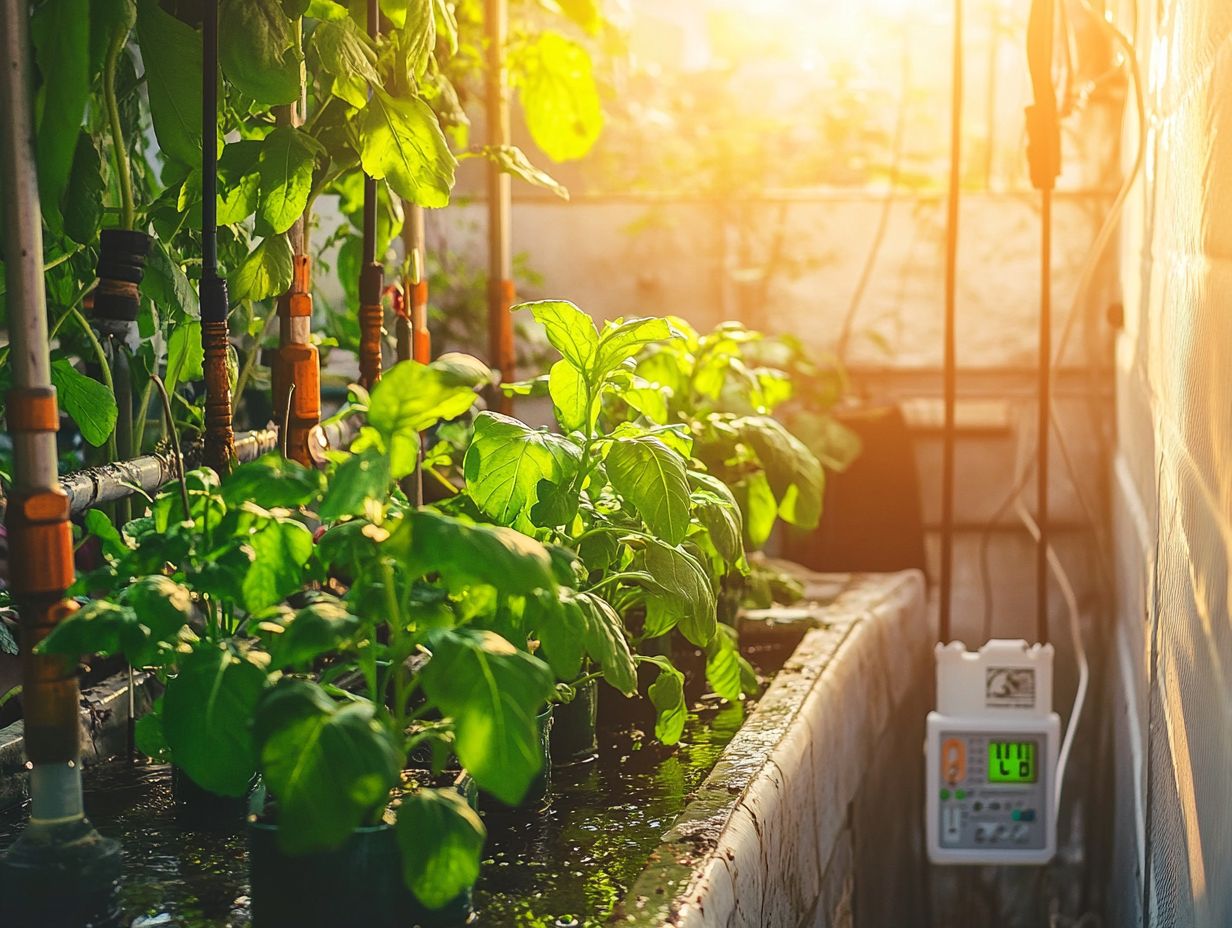
In Deep Water Culture (DWC), plants sit in a nutrient-rich solution. Their roots absorb nutrients while air stones provide essential oxygen. This method is popular for its simplicity and effectiveness, leading to rapid growth and impressive yields across various hydroponic setups.
DWC is especially ideal for cultivating leafy greens and herbs, making it a stellar choice for anyone passionate about indoor gardening. To set up your DWC system, start with a sturdy container filled with a well-formulated nutrient solution tailored to your plants’ needs. Essential materials include air stones connected to an air pump to maintain optimal oxygen levels in the water.
If you plan to recycle your solution, a submersible pump is also a smart move. It’s important to manage lighting, pH levels, and water temperature for healthy plant growth. While DWC offers faster growth compared to other hydroponic systems, keep an eye out for common issues like root rot or nutrient imbalances.
By proactively addressing these potential setbacks, you can fully reap the rewards of this efficient cultivation method and enjoy a thriving indoor garden.
Ebb and Flow (Flood and Drain)
The Ebb and Flow system, also called Flood and Drain, works by flooding plant roots with a nutrient solution before draining it back. This cycle not only gives moisture but also oxygenates the roots, promoting strong growth. You can use various growing mediums substances that support plants’ roots such as clay pebbles or coconut pith. This system is remarkably versatile, suitable for everything from vegetables to vibrant flowers.
Timing is paramount in this process; you’ll need to manage the flooding and draining cycles meticulously to create the ideal conditions for growth. The frequency of these cycles depends on the specific plants you re cultivating, as some species crave more frequent watering than others.
Moreover, the choice of growing medium is pivotal to the system s success. It should retain some moisture while allowing excess to drain away. Excellent options for this setup include herbs, leafy greens, and even certain fruiting plants, all of which thrive on the efficient delivery of nutrients and ample aeration that the Ebb and Flow system masterfully provides.
Get started now and watch your indoor garden thrive like never before!
Drip System
The Drip System is a celebrated hydroponic method that delivers the right nutrients and moisture while minimizing waste. It uses a system of pipes and emitters to provide a precise amount of nutrient solution directly to plant roots.
This automated watering system is perfect for cultivating a diverse array of plants from fragrant herbs to hearty vegetables. It is known for its remarkable efficiency and effectiveness.
Setting it up involves several key components, including a reservoir, pump, filtration system, and timers. These elements work together to create optimal conditions for plant growth.
While the benefits of this system are clear, it’s vital to recognize potential challenges, such as clogs or uneven nutrient distribution. Adjustments may be necessary based on the specific needs of different plant types to ensure they receive appropriate nutrient concentrations.
This underscores the importance of regular maintenance, which includes routine checks to clear any blockages and recalibrate nutrient delivery. Doing so maximizes both plant health and yield.
Aeroponics
Aeroponics is an advanced hydroponic technique that allows you to suspend plant roots in air, misting them with a nutrient solution. Your plants will thrive with optimal access to oxygen and nutrients!
This method minimizes water usage and accelerates growth rates, making it a popular choice for hydroponic enthusiasts. Aeroponics is particularly effective for high-density planting, allowing you to grow everything from leafy greens to luscious fruits.
In an aeroponic setup, plants are housed in a chamber equipped with misting nozzles that deliver a fine spray of nutrient-rich water directly to their exposed roots. This method not only conserves water, but also reduces the risk of soil-borne diseases, letting you enjoy cleaner and healthier produce.
Ideal candidates for your aeroponic system include favorites like basil, lettuce, and various herbs, all flourishing when misted rather than submerged. Specialized equipment, such as pumps, timers, and humidity controls, is essential to optimize your setup.
When comparing aeroponics to traditional hydroponic methods, you’ll discover that it can significantly shorten your time to harvest while using less space and fewer resources.
Building Your Own Hydroponic Water System
Building your own hydroponic water system can be an exhilarating DIY project. It allows you to tailor your setup to your unique space and plant preferences.
With the right materials and tools, you can craft a functional system that meets the specific needs of your chosen plants. From determining the ideal seed depth to selecting the best gardening tools, the construction process offers a sense of fulfillment that rivals the joy of your indoor harvest.
Materials and Set-Up
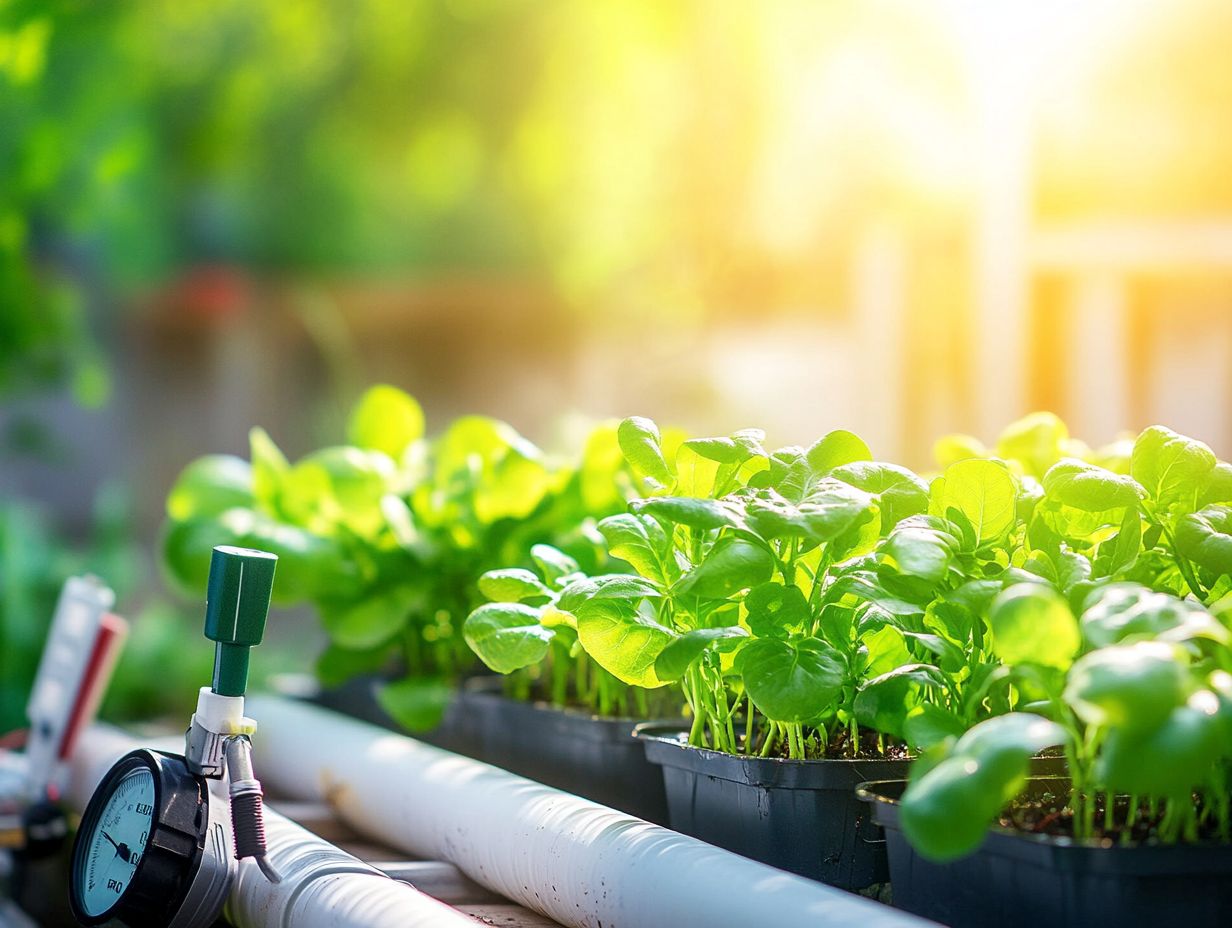
The materials needed for a hydroponics system will vary depending on the method you choose, but some essentials remain constant. A suitable growing medium, water pumps, and air pumps are critical for optimal nutrient solution distribution.
Understanding how to select the right materials is crucial for crafting a successful hydroponic system, as each component significantly influences plant health and growth efficiency.
Your growing medium options might include peat moss or rock wool, each providing unique drainage and aeration characteristics. Water pumps are vital for delivering nutrient solutions directly to your plants, while air pumps oxygenate the water, promoting robust root growth.
Pay careful attention to component placement while setting up your system. Keeping pumps low can help avoid cavitation, which is the formation of vapor pockets in liquid that can damage pumps. Ensuring easy access for maintenance is key.
Correctly connecting the pumps enhances system efficiency, allowing for seamless circulation and preventing potential blockages that could disrupt nutrient delivery.
Maintaining a Hydroponic Water System
Maintaining your hydroponic water system is crucial for promoting healthy plant growth and maximizing your indoor harvests. Regularly check pH levels and nutrient levels. Establish a cleaning schedule to prevent algae and nutrient buildup.
By embracing effective care for your hydroponic plants, you can troubleshoot common issues and ensure your plants thrive beautifully.
Proper pH and Nutrient Levels
Keeping proper pH and nutrient levels is essential for your hydroponic care, as these factors directly influence the health and growth rates of your plants. Ideally, maintain the pH for most hydroponic systems between 5.5 and 6.5. Ensure that your nutrient solution contains essential trace minerals and is adjusted according to a fertilizer schedule tailored to your plants’ needs.
To test and adjust pH levels, regularly use reliable test kits or electronic pH meters. If needed, adjust with pH up or down solutions. It’s also crucial to monitor nutrient solutions frequently; variations can stress your plants and hinder their development. Trace minerals like iron, magnesium, and calcium are vital for enzymatic processes and overall health.
Consider this sample fertilizer schedule: use a balanced nutrient mix for leafy greens, while flowering plants may thrive with a higher phosphorus formulation during their bloom phase. Regular assessments promote robust growth and healthier yields. Watch your hydroponic garden thrive!
Cleaning and Troubleshooting
Cleaning and troubleshooting your hydroponic system is essential for its longevity and efficiency, especially when utilizing automated watering systems or nutrient film techniques. Regular cleaning prevents nutrient buildup, algae, and other pesky issues that could stifle plant growth. Troubleshooting allows you to pinpoint and address problems like pump failures or nutrient imbalances.
Recognizing the importance of a meticulous cleaning schedule is crucial for any hydroponic gardener. It lays the groundwork for a flourishing garden. Aim to clean your system every two to four weeks, depending on the scale and type of your setup. Effective methods include rinsing components with warm water, using vinegar to tackle algae, and sanitizing with a diluted bleach solution.
When it comes to troubleshooting, knowing how to monitor pH levels and nutrient concentrations is key. This knowledge helps you swiftly address common issues, creating a healthier environment for both novice and seasoned growers.
Frequently Asked Questions
What materials do I need to create a hydroponic water system?
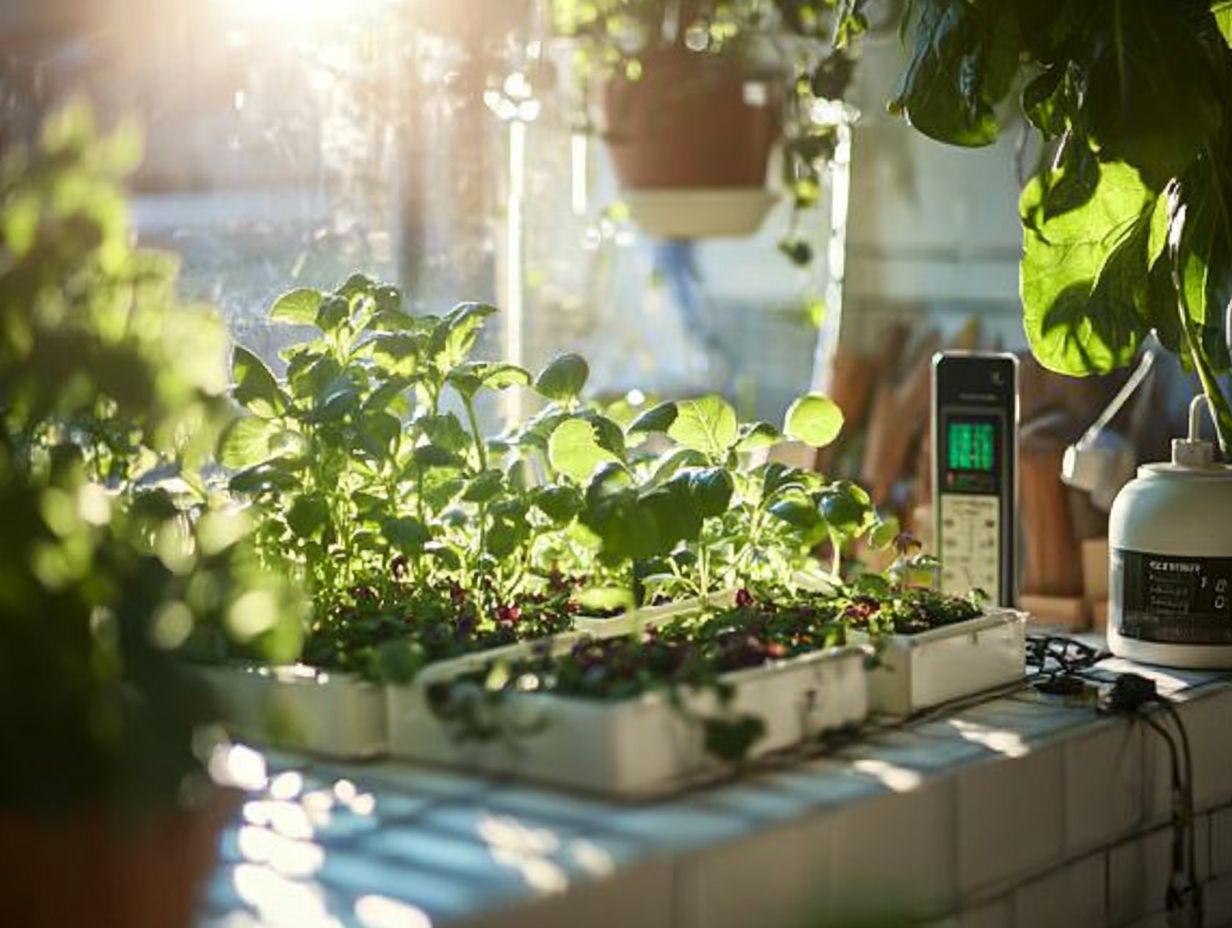
You’ll need a container, pump, growing medium, nutrient solution, and your plants. Optional items include a timer and pH tester.
Can I use any container for a hydroponic water system?
While you can use any container, it is best to use food-grade plastic containers or buckets to avoid potential contamination of the plants.
How do I set up the pump in a hydroponic water system?
Start by placing the pump at the bottom of the container. If desired, connect the pump to a timer. Then, run the tubing from the pump to the top of the container where the plants will be located.
What is the best growing medium to use in a hydroponic water system?
The best growing medium depends on the type of plants you are growing. Popular options include expanded clay pebbles, coco coir, and rockwool cubes. Choose a medium that is lightweight, pH neutral, and provides good aeration for the roots.
How often should I change the nutrient solution in a hydroponic water system?
This depends on the type of plants you’re growing and the size of your system. It is recommended to change the solution every 1-2 weeks to prevent nutrient buildup and keep the plants healthy.
What plants can I grow in a hydroponic system?
Virtually any plant can be grown in a hydroponic system. This includes herbs, leafy greens, and even fruiting plants like tomatoes and peppers.
Make sure to research your plants’ needs. Tailor your system for the best growth.

